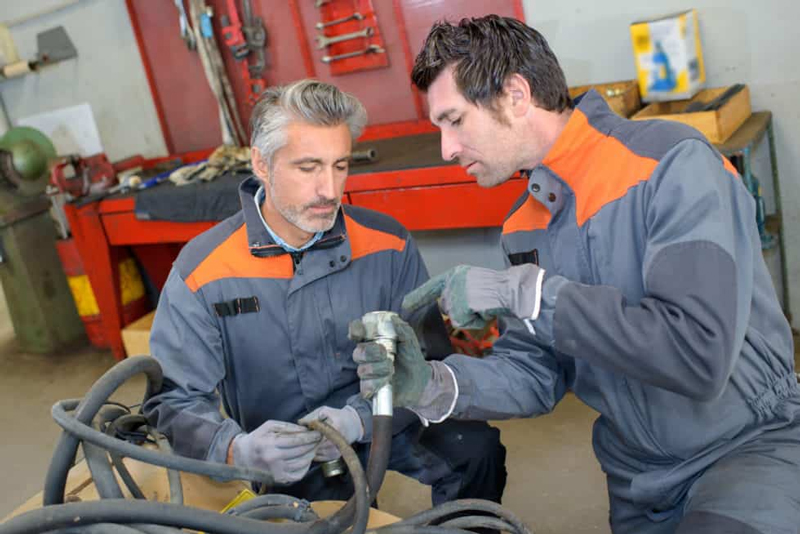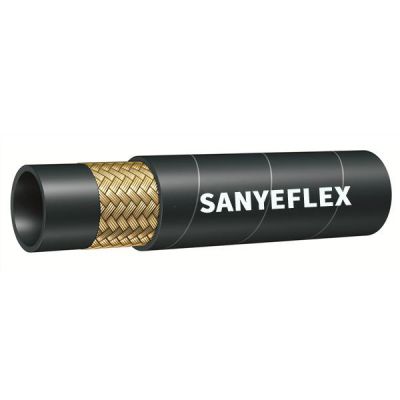Feb. 15, 2023

When using high-pressure steel wire to wind the rubber hose, how can we ensure its service life? On the premise of quality assurance, if the wrong operation, it will also reduce the service life of the rubber hose. In practice, most of the damage to high-pressure steel wire wound rubber hoses is mostly caused by wrong operations.
(1) Subject to frequent and severe pressure impact. The cracking of high-pressure steel wire wound rubber hose is generally not caused by excessive static pressure, but is related to the intensity and frequency of pressure impact. When the construction machinery and equipment are working, the sudden rise or decrease of the steam pressure in the oil pipeline will occur repeatedly, which will cause frequent pressure shocks to the oil pipeline, resulting in aggravated damage to the skeleton seals everywhere, and bubbles and cracks in the hose. And the leakage of the three-way joint. Therefore, during the operation, the rotation of the valve seat must not be excessively forced, but must be gentle.
(2) The application temperature of hydraulic oil is too high. During the mechanical operation of engineering projects, the hydraulic press system will heat up due to power loss and the hydraulic oil, coupled with the influence of external temperature (especially in summer), the temperature can rise significantly. The higher the application temperature of the hydraulic oil, the more likely the plastic will age, the elasticity will decrease, the hardness and sealing properties will decrease, and the rubber hose will naturally crack. Therefore, during operation, when the temperature of the hydraulic press system rises too high and too fast, it is necessary to find out the cause in time and eliminate it; summer work, especially when working continuously, must take necessary cooling measures.
(3) The use and assembly of rubber hoses is unscientific. When replacing the high-pressure steel wire wound rubber hose, the length of the rubber hose, the number of superimposed layers of stainless steel wire, and the shape and specifications of the connector need to be effective, and the bending degree of the rubber hose should be reduced as much as possible; when tightening the nut of the connector , Do not distort the rubber hose, excessive bending and bending will greatly reduce the service life of the rubber hose; preventive measures should be taken for some parts that are prone to friction to prevent the rubber hose from cracking due to damage.
Fault phenomenon of the outer glue of the high-pressure steel wire wound rubber hose
(1) Cracks appear on the appearance of the rubber hose
The main reason for cracks in the appearance of the hose is that the plastic hose is bent under severe cold conditions.
(2) There are bulges on the surface of the plastic hose
The reason for the bulge on the surface of the plastic hose is that the quality of the plastic hose is not up to standard, or it is mishandled during work.
(3) The plastic hose is not cracked but there is a lot of oil leakage
The plastic hose leaked a lot of oil but no cracks were found. This is because when the plastic hose passes through the high-pressure flow, the inner rubber is eroded and scratched until a large-scale leak of the stainless steel wire layer causes a lot of oil leakage.
What should be paid attention to in the application of high-pressure steel wire wound rubber hose
1. The rubber hose and high-pressure hose assembly can only be used to transport the customized raw materials, otherwise the service life will be shortened or invalid.
2. Standardize the length of the rubber hose. The length of the rubber hose changes (-4%-+2%) under high pressure and the length change caused by the movement of mechanical equipment.
3. The rubber hose and high-pressure hose assembly cannot be used under the working pressure (including impact pressure) exceeding the design task.
4. Under normal circumstances, the ambient temperature of the material transported by the rubber hose and high-pressure hose assembly should not exceed -40°C-+120°C, otherwise the service life will be shortened.
Previous: The Use and Characteristics of High-Pressure Steel Wire Wound Rubber Hose are Introduced in Detail
Our Customer
Tel.: +86 400 0318 111
Email: admin@sanyeflex.com
Add.: #218 Zhongke Street, High-tech Zone, Hengshui City, Hebei Province, China



